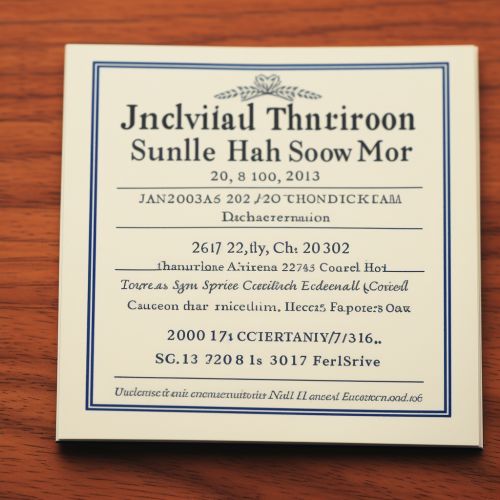Piscirickettsiaceae
Introduction
The family Piscirickettsiaceae comprises a group of Gram-negative bacteria within the class Gammaproteobacteria. These bacteria are primarily known for their pathogenicity in fish, causing significant economic impacts in aquaculture industries worldwide. The family was first described in 1991 and includes several genera, with the type genus being Piscirickettsia.
Taxonomy and Classification
Piscirickettsiaceae belongs to the order Thiotrichales, within the class Gammaproteobacteria. The family currently includes the following genera:
The type species of the family is Piscirickettsia salmonis, which is the most well-studied and economically significant member of the family.
Morphology and Physiology
Members of the Piscirickettsiaceae family are small, rod-shaped bacteria, typically measuring 0.5-1.5 µm in length. They are Gram-negative, non-motile, and do not form spores. The bacteria exhibit a unique intracellular lifestyle, often residing within membrane-bound vacuoles in host cells. This intracellular niche provides protection from the host immune system and allows the bacteria to exploit host resources.
The cell wall structure of Piscirickettsiaceae is typical of Gram-negative bacteria, consisting of an outer membrane, a thin peptidoglycan layer, and an inner cytoplasmic membrane. The outer membrane contains lipopolysaccharides (LPS), which play a crucial role in the pathogenicity and immune evasion of these bacteria.
Genomics and Molecular Biology
The genome of Piscirickettsiaceae members is relatively small, typically ranging from 1.5 to 2.5 megabase pairs (Mbp). The genome encodes a variety of virulence factors, including type IV secretion systems, which are essential for intracellular survival and replication. These secretion systems facilitate the translocation of effector proteins into host cells, manipulating host cell processes to benefit the bacteria.
Piscirickettsia salmonis, the most studied member, has a circular chromosome and several plasmids that carry genes associated with antibiotic resistance and virulence. Comparative genomics has revealed significant genetic diversity within the family, with different strains exhibiting varying degrees of pathogenicity and host specificity.
Pathogenesis and Host Interaction
Piscirickettsiaceae are obligate intracellular pathogens, primarily infecting fish species. The infection process begins with the bacteria entering the host through the gills or skin lesions. Once inside the host, the bacteria are phagocytosed by macrophages and other immune cells. Instead of being destroyed, Piscirickettsiaceae survive and replicate within these cells, often forming large intracellular colonies.
The bacteria employ various strategies to evade the host immune system, including the inhibition of phagosome-lysosome fusion and the modulation of host cell apoptosis. The release of bacterial toxins and effector proteins further damages host tissues, leading to clinical symptoms such as lethargy, anorexia, and hemorrhagic lesions.
Epidemiology and Economic Impact
Piscirickettsiaceae infections are a major concern in aquaculture, particularly in salmonid farming. Piscirickettsia salmonis, the causative agent of piscirickettsiosis or salmonid rickettsial septicemia (SRS), has been responsible for significant economic losses in the salmon farming industry, particularly in Chile, Norway, and Canada.
The bacteria can be transmitted horizontally through water and vertically from infected broodstock to offspring. Environmental factors such as water temperature, salinity, and stress levels can influence the severity and spread of the disease. Effective management and control strategies, including vaccination, antibiotic treatment, and biosecurity measures, are essential to mitigate the impact of Piscirickettsiaceae infections.
Diagnosis and Treatment
Diagnosis of Piscirickettsiaceae infections involves a combination of clinical observation, histopathology, and molecular techniques. Polymerase chain reaction (PCR) and quantitative PCR (qPCR) are commonly used to detect and quantify bacterial DNA in infected tissues. Immunohistochemistry and in situ hybridization can also be employed to visualize the bacteria within host cells.
Treatment options for Piscirickettsiaceae infections are limited, as the bacteria are often resistant to multiple antibiotics. Oxytetracycline and florfenicol are commonly used antibiotics, but their efficacy can be variable. Vaccination has shown promise in preventing infections, with several commercial vaccines available for Piscirickettsia salmonis. However, the development of effective vaccines for other members of the family remains a challenge.
Research and Future Directions
Ongoing research on Piscirickettsiaceae aims to better understand the molecular mechanisms of pathogenesis, host-pathogen interactions, and the development of effective control measures. Advances in genomics, proteomics, and transcriptomics are providing new insights into the biology of these bacteria and identifying potential targets for therapeutic intervention.
Future research directions include the development of novel vaccines, the identification of new antimicrobial agents, and the exploration of alternative strategies such as phage therapy and probiotics. Understanding the environmental factors that influence the spread and severity of infections will also be crucial for improving disease management in aquaculture.
See Also
References
- == Overview ==
A "Cite journal" template is a predefined format used in academic and scientific writing to provide a consistent method of citing sources from journal articles. The template is designed to ensure that all necessary information is included and presented in a standard format, making it easier for readers to locate the original source of the information. This template is widely used in Wikipedia and other online encyclopedias to maintain a high level of academic integrity and to adhere to the principles of citation and avoiding plagiarism.
Usage
The "Cite journal" template is used by inserting the template code into the text of an article at the point where the citation is required. The template code includes various fields that need to be filled in with the details of the journal article being cited. These fields include the author(s), title of the article, title of the journal, volume and issue number, publication date, page numbers, and DOI (Digital Object Identifier) if available.


Fields
The "Cite journal" template includes several fields that are used to provide detailed information about the journal article being cited. These fields are:
- Author: The name(s) of the author(s) of the journal article. This field is mandatory.
- Title: The title of the journal article. This field is mandatory.
- Journal: The name of the journal in which the article was published. This field is mandatory.
- Volume: The volume number of the journal in which the article was published.
- Issue: The issue number of the journal in which the article was published.
- Pages: The page numbers of the article in the journal.
- Year: The year in which the article was published. This field is mandatory.
- DOI: The Digital Object Identifier of the article, if available. This is a unique alphanumeric string assigned to a digital object, such as a research report or a journal article, to provide a persistent link to its location on the internet.
Benefits
The use of the "Cite journal" template offers several benefits. It ensures that all necessary information about a source is included in a citation, which helps readers to locate the original source of the information. The template also provides a consistent format for citations, which makes it easier for readers to understand the citation and for editors to check the accuracy of the citation. Furthermore, the use of the template helps to maintain the credibility and integrity of the article by demonstrating that the information has been sourced from reputable and reliable sources.
Limitations
While the "Cite journal" template is a valuable tool for citing journal articles, it does have some limitations. The template may not be suitable for citing sources that are not journal articles, such as books, websites, or personal communications. In these cases, other citation templates may be more appropriate. Additionally, the template requires detailed information about the source, which may not always be readily available. Finally, the use of the template requires a certain level of technical knowledge and familiarity with the template code, which may be a barrier for some users.
See Also
- Citation
- Digital Object Identifier
- Journal
- Plagiarism
- == Overview ==
The Cite book template is a citation style commonly used in Wikipedia to reference books. It is a part of the larger family of citation templates that are used to accurately and consistently cite various types of sources. The template is designed to be comprehensive and detailed, allowing for the inclusion of a wide range of bibliographic information.
Usage
The Cite book template is used by inserting the following code into the text: Template loop detected: Template:Cite book. Each of these parameters corresponds to a specific piece of bibliographic information.
For instance, 'last' and 'first' refer to the last and first names of the book's author(s), 'date' refers to the publication date, 'title' is the title of the book, 'url' is the link to the online version of the book (if available), 'access-date' is the date when the online version was accessed, and 'publisher' is the name of the publishing company.
Parameters
The Cite book template includes a number of parameters, each of which corresponds to a specific piece of bibliographic information. These parameters are used to provide a detailed citation for the book being referenced.


The following is a list of parameters used in the Cite book template:
- last: The last name of the author(s).
- first: The first name of the author(s).
- date: The publication date of the book.
- title: The title of the book.
- url: The URL of the online version of the book (if available).
- access-date: The date when the online version was accessed.
- publisher: The name of the publishing company.
It's important to note that while these parameters are commonly used, they are not mandatory. The template is flexible and can accommodate a wide range of citation needs.
Variations
There are several variations of the Cite book template that can be used to accommodate different citation needs. These variations include:
- Cite book |author-link=: This variation is used when the author of the book has a Wikipedia page. The 'author-link' parameter is used to create a hyperlink to the author's Wikipedia page.
- Cite book |edition=: This variation is used to cite a specific edition of a book. The 'edition' parameter is used to specify the edition being cited.
- Cite book |chapter=: This variation is used to cite a specific chapter of a book. The 'chapter' parameter is used to specify the chapter being cited.
See Also
Categories
- == Overview ==
A "Cite journal" template is a predefined format used in academic and scientific writing to provide a consistent method of citing sources from journal articles. The template is designed to ensure that all necessary information is included and presented in a standard format, making it easier for readers to locate the original source of the information. This template is widely used in Wikipedia and other online encyclopedias to maintain a high level of academic integrity and to adhere to the principles of citation and avoiding plagiarism.
Usage
The "Cite journal" template is used by inserting the template code into the text of an article at the point where the citation is required. The template code includes various fields that need to be filled in with the details of the journal article being cited. These fields include the author(s), title of the article, title of the journal, volume and issue number, publication date, page numbers, and DOI (Digital Object Identifier) if available.


Fields
The "Cite journal" template includes several fields that are used to provide detailed information about the journal article being cited. These fields are:
- Author: The name(s) of the author(s) of the journal article. This field is mandatory.
- Title: The title of the journal article. This field is mandatory.
- Journal: The name of the journal in which the article was published. This field is mandatory.
- Volume: The volume number of the journal in which the article was published.
- Issue: The issue number of the journal in which the article was published.
- Pages: The page numbers of the article in the journal.
- Year: The year in which the article was published. This field is mandatory.
- DOI: The Digital Object Identifier of the article, if available. This is a unique alphanumeric string assigned to a digital object, such as a research report or a journal article, to provide a persistent link to its location on the internet.
Benefits
The use of the "Cite journal" template offers several benefits. It ensures that all necessary information about a source is included in a citation, which helps readers to locate the original source of the information. The template also provides a consistent format for citations, which makes it easier for readers to understand the citation and for editors to check the accuracy of the citation. Furthermore, the use of the template helps to maintain the credibility and integrity of the article by demonstrating that the information has been sourced from reputable and reliable sources.
Limitations
While the "Cite journal" template is a valuable tool for citing journal articles, it does have some limitations. The template may not be suitable for citing sources that are not journal articles, such as books, websites, or personal communications. In these cases, other citation templates may be more appropriate. Additionally, the template requires detailed information about the source, which may not always be readily available. Finally, the use of the template requires a certain level of technical knowledge and familiarity with the template code, which may be a barrier for some users.
